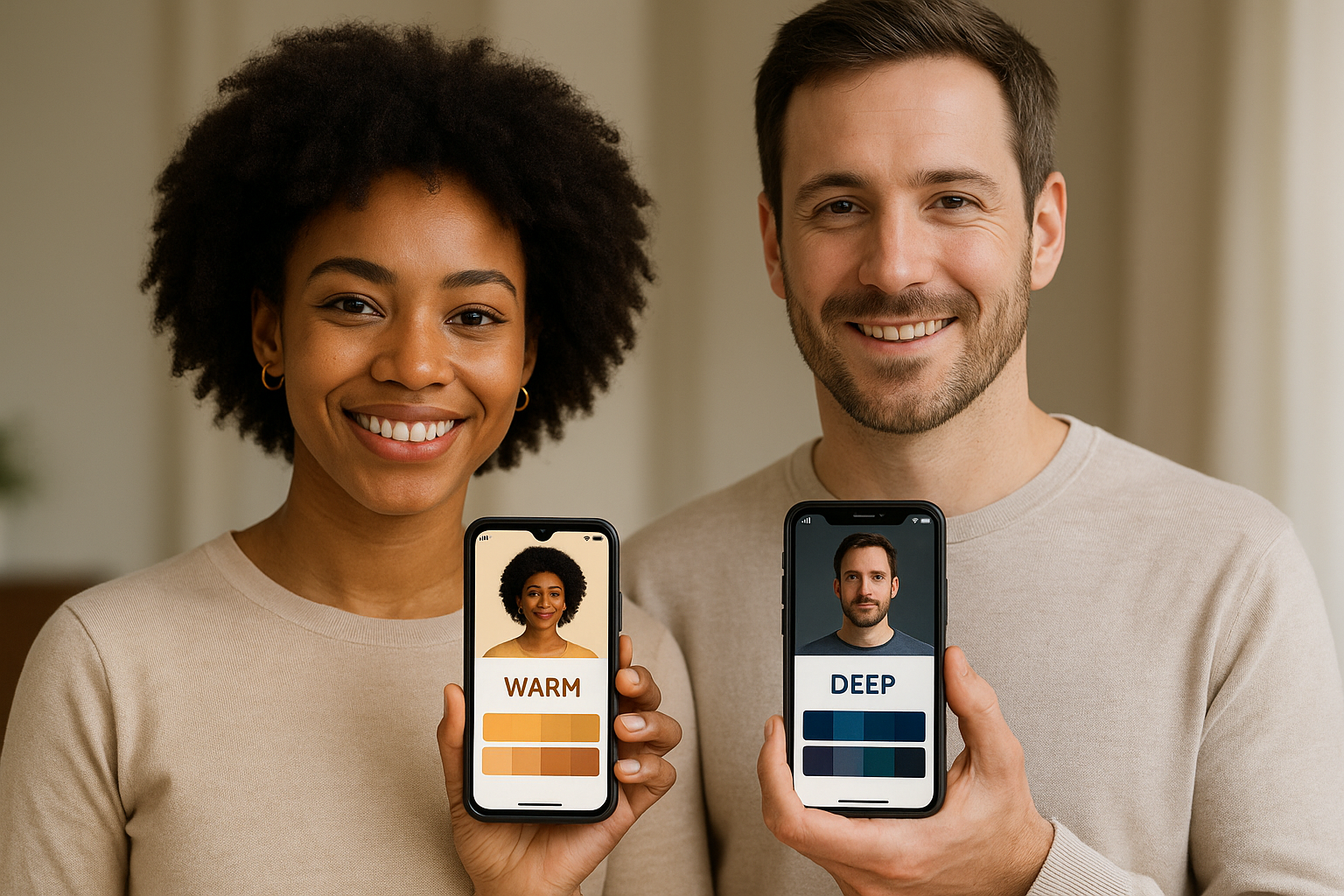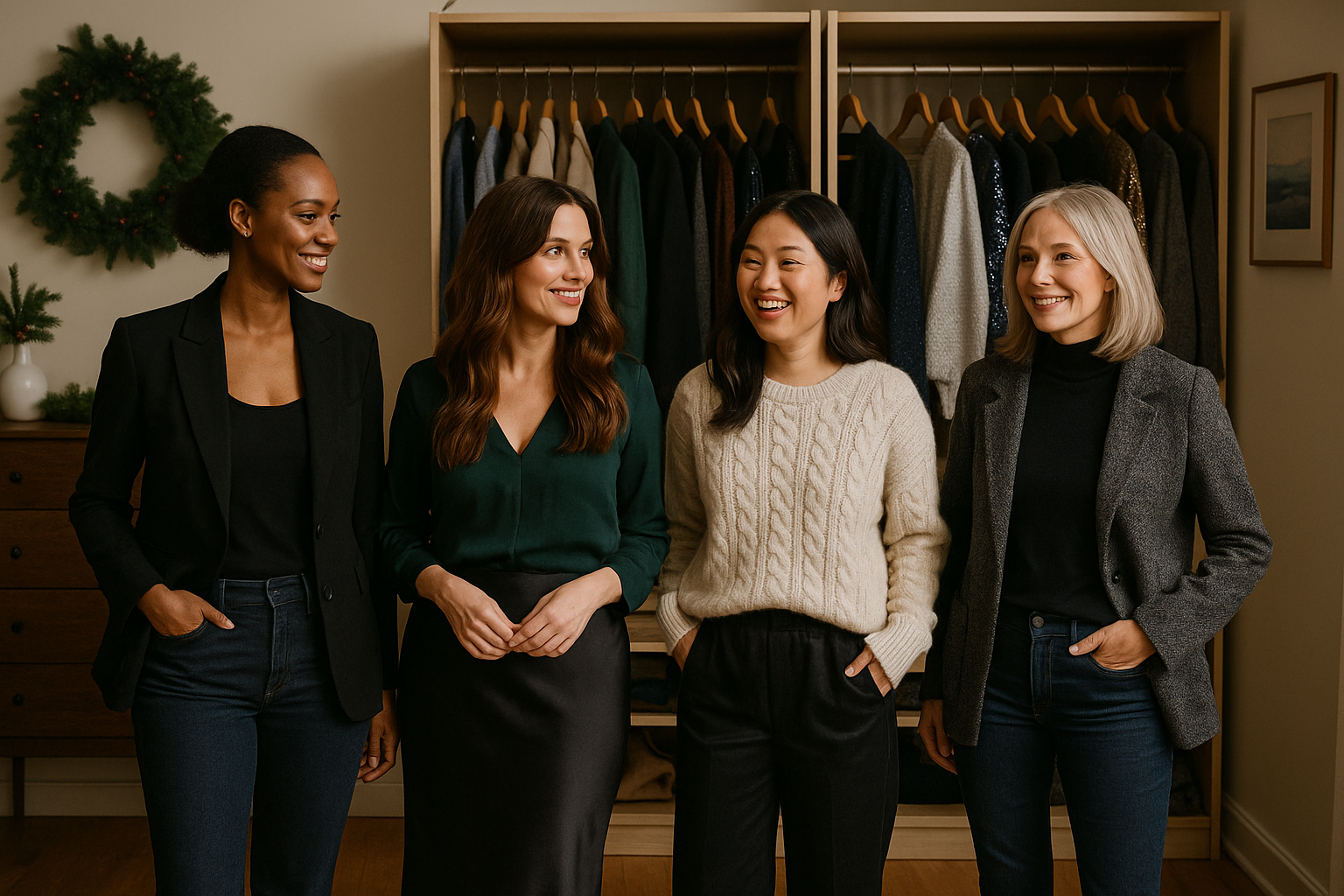
Ever wondered why some colors make you look energized and glowing, while others leave you looking tired, washed out, or just “meh”? You’re not imagining it—color really does matter, and personal color analysis is the secret behind it all. Best of all, you don’t need to visit a stylist or makeup counter to find your palette. Welcome to the world of online color analysis, where discovering your best shades is just a selfie and a few clicks away.
Why Is Color Analysis So Popular Again?
From TikTok “season” reveals to Instagram filter challenges, personal color analysis is having a major comeback. Influencers are going viral sharing their color “wins” and “fails.” Meanwhile, style editors and beauty bloggers are calling color analysis the most cost-effective confidence boost you can buy. Whether you want to nail your next Zoom call, shop smarter, or just love seeing yourself in your best light, finding your colors is the ultimate style hack.
What Is Personal Color Analysis?
Personal color analysis is the process of identifying which colors of clothing and makeup make you look (and feel) your best. It’s based on your skin tone, undertones, eye color, and hair shade. The right palette can brighten your complexion, bring out your eyes, and make everything in your closet easier to mix and match.
Traditionally, color analysis was done by a consultant draping fabric swatches in natural light. But these days, AI and digital tools can deliver surprisingly accurate results right from your phone or laptop.
Seasonal vs. Tonal Analysis: What’s the Difference?
You might have heard of the “seasons” approach—Spring, Summer, Autumn, Winter—each with its own set of flattering colors. But there’s also a more flexible, modern method: tonal analysis.
- Seasonal analysis sorts you into a “season” based on your undertone and coloring. Each season has a set palette.
- Tonal analysis looks at depth (light/dark), clarity (soft/bright), and undertone (warm/cool), creating a more customized palette that adapts as you change your hair color, tan, or age.
Both methods work, but tonal analysis is quickly gaining popularity because it’s less rigid and more inclusive of unique coloring.
How Does Online Color Analysis Work?
The magic starts with a good selfie and a few easy questions. Here’s how most digital color analysis tools and quizzes work:
- Upload a Selfie
Choose a photo in natural light, without makeup, and ideally with your hair down. The goal is to see your skin, hair, and eyes clearly. - Answer a Few Questions
Some tools will ask about your natural hair and eye color, what jewelry looks best on you (silver or gold), and which colors you instinctively reach for. - Let the Tech Do Its Thing
Using AI, image analysis, or expert algorithms, the tool scans your features and compares them to thousands of reference points. - Get Your Palette
In seconds, you’ll receive a customized palette—complete with clothing, makeup, and even hair color suggestions. Many platforms offer sample outfit ideas or let you preview colors on your digital wardrobe.
Benefits of Virtual Color Analysis
- Instant Results: No appointments or waiting—get your palette now.
- Try It With Your Own Closet: See which colors you already own and which ones are worth adding.
- Shop Smarter: Focus on colors that suit you, avoid costly mistakes, and build a more versatile wardrobe.
- Boost Confidence: Step out the door knowing you look fresh and put-together—every day.
- Inclusive & Adaptable: Works for all skin tones, hair colors, and ages. You can even update your palette as you change.
Try It Yourself: Take the Color Analysis Quiz
Curious to see what your best colors might be? Try our Style Blueprint Quiz—it’s quick, and fun. You’ll answer a handful of questions and upload a well-lit selfie, and you’ll get feedback on the shades that truly make you shine plus more. Use code BLOG50 for 50% off. One time small investment will give you a lifetime of style.
Start the Style Blueprint Quiz - MEN»
Start the Style Blueprint Quiz - WOMEN»
FAQs
Do men benefit from color analysis, or is it just for women?
Absolutely, men benefit just as much! Knowing which colors complement your skin tone makes shopping and dressing simpler, helps you look healthier, and instantly sharpens your appearance—whether in a t-shirt, dress shirt, or suit.
Can I really do color analysis without a pro?
Yes! Online tools are becoming impressively accurate, especially when you follow the selfie and lighting instructions.
Is color analysis for men different from women’s?
The process is the same: it’s all about your skin, eye, and hair color—not about gender. The quiz or AI tool analyzes your unique coloring and suggests the shades that work best for you.
What if I mostly wear neutrals or business attire?No problem! A good analysis will show which neutrals flatter you most and suggest accent colors that fit your personal style—whether you want to keep things classic or add a pop of color.
Do I need a makeup-free photo?
For best results, yes. Makeup can mask your true undertones, which are key to your analysis.
How accurate are online tools?
They’re surprisingly close—especially if you use a recent, natural-light selfie. Remember, color analysis is a guide, not a rulebook. If you love a color, wear it!
Conclusion
Personal color analysis used to require a day at the stylist and a pile of fabric swatches. Now, you can discover your most flattering shades from the comfort of home—no appointments, no awkward lighting, and no guesswork. All you need is your phone, a few minutes, and a little curiosity. Try it for yourself, and get ready to see your wardrobe (and your confidence) in a whole new light.


.svg)



